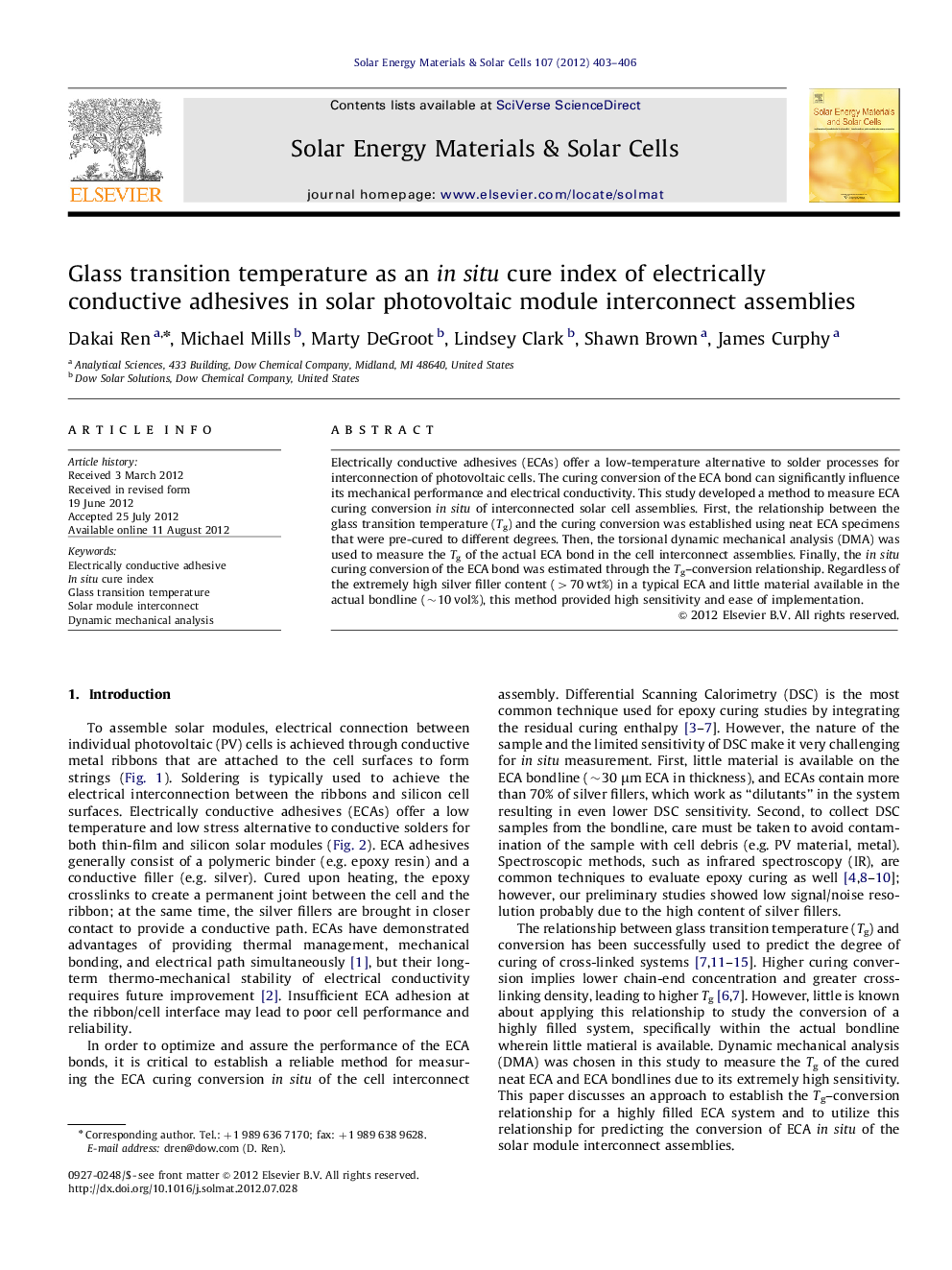| Article ID | Journal | Published Year | Pages | File Type |
|---|---|---|---|---|
| 78937 | Solar Energy Materials and Solar Cells | 2012 | 4 Pages |
Electrically conductive adhesives (ECAs) offer a low-temperature alternative to solder processes for interconnection of photovoltaic cells. The curing conversion of the ECA bond can significantly influence its mechanical performance and electrical conductivity. This study developed a method to measure ECA curing conversion in situ of interconnected solar cell assemblies. First, the relationship between the glass transition temperature (Tg) and the curing conversion was established using neat ECA specimens that were pre-cured to different degrees. Then, the torsional dynamic mechanical analysis (DMA) was used to measure the Tg of the actual ECA bond in the cell interconnect assemblies. Finally, the in situ curing conversion of the ECA bond was estimated through the Tg–conversion relationship. Regardless of the extremely high silver filler content (>70 wt%) in a typical ECA and little material available in the actual bondline (∼10 vol%), this method provided high sensitivity and ease of implementation.
► Tg–conversion behavior is established on an electrically conductive adhesive (ECA). ► Tg is an in situ cure index of ECA in solar module interconnect assemblies. ► DMA is highly sensitive in detecting Tg of ECA in situ of solar module assemblies.
